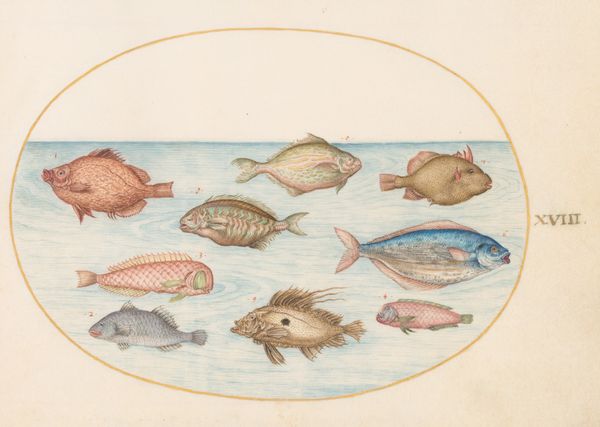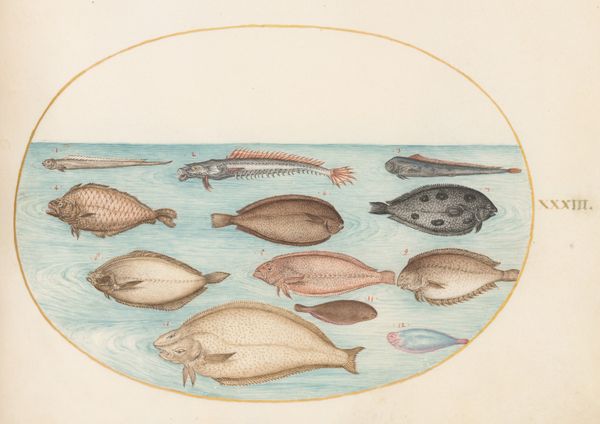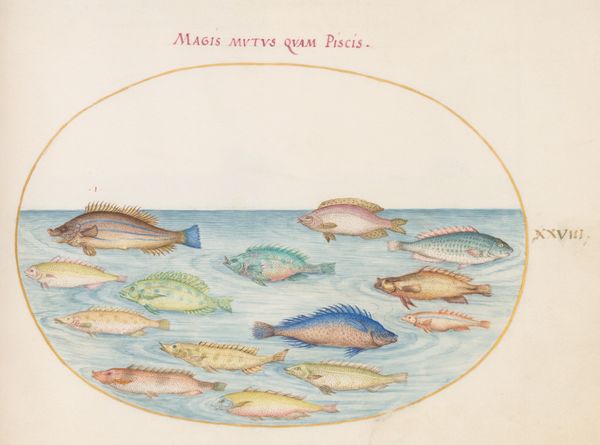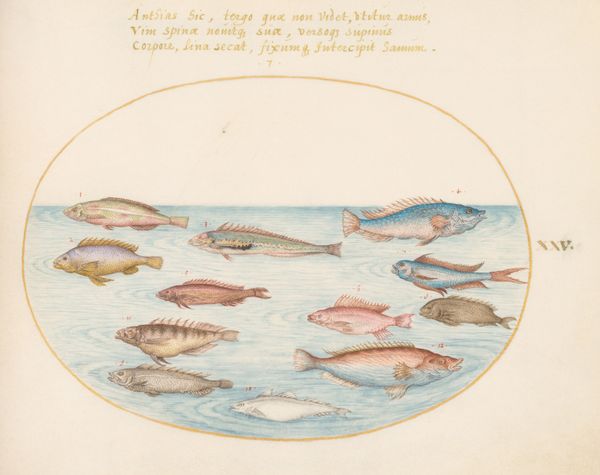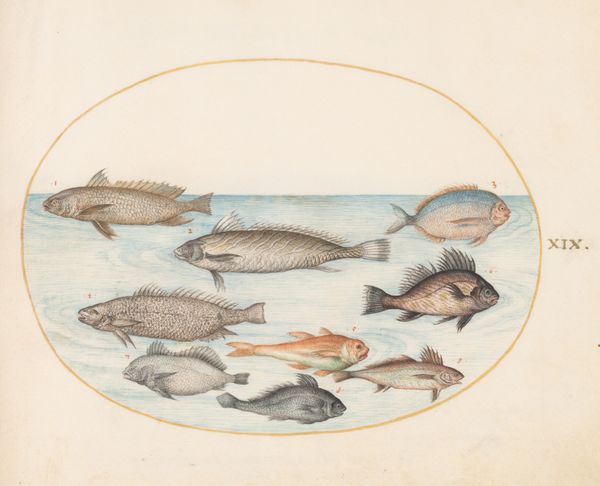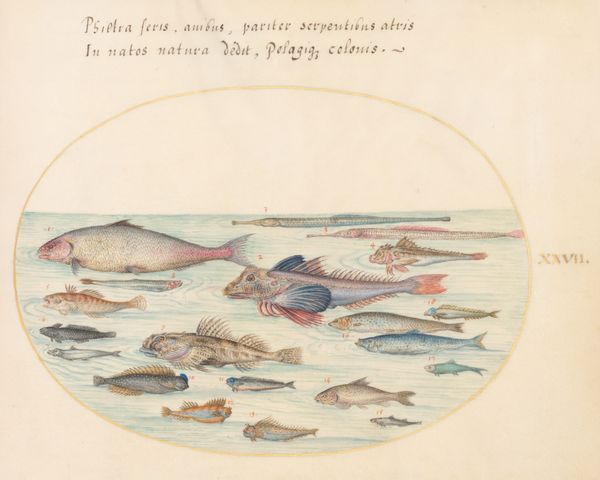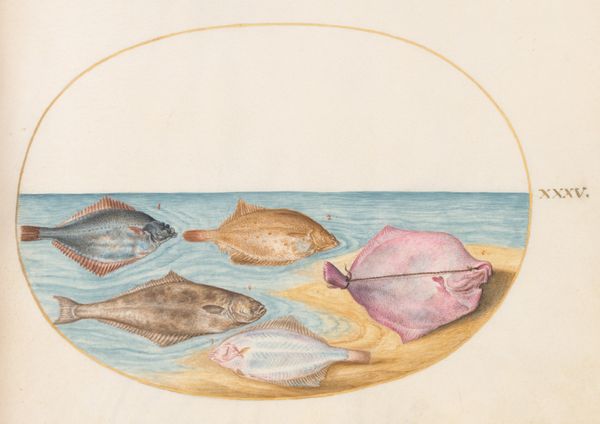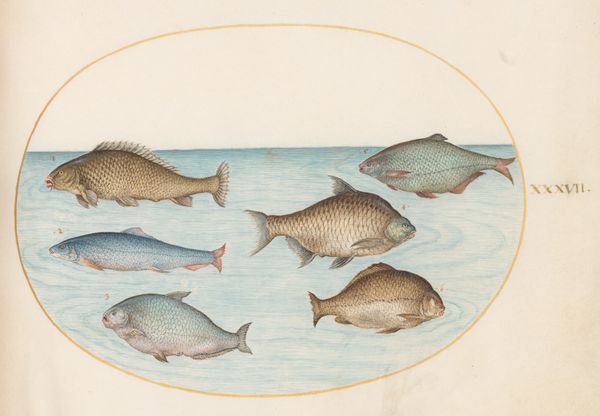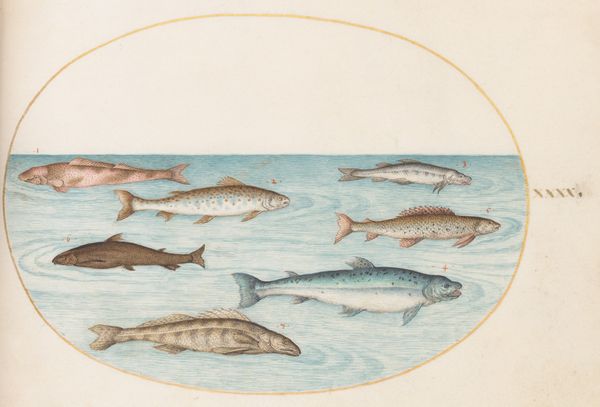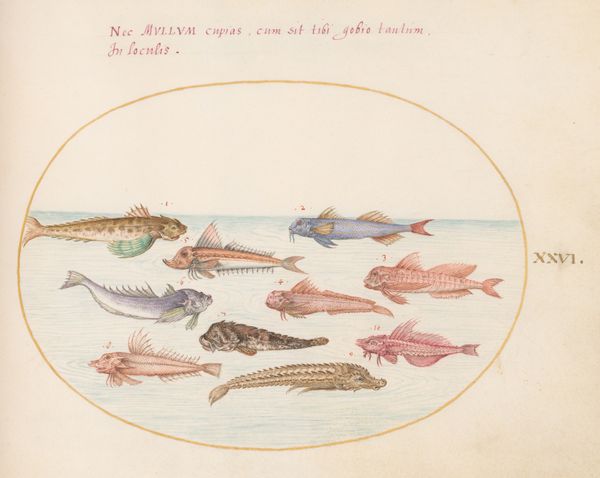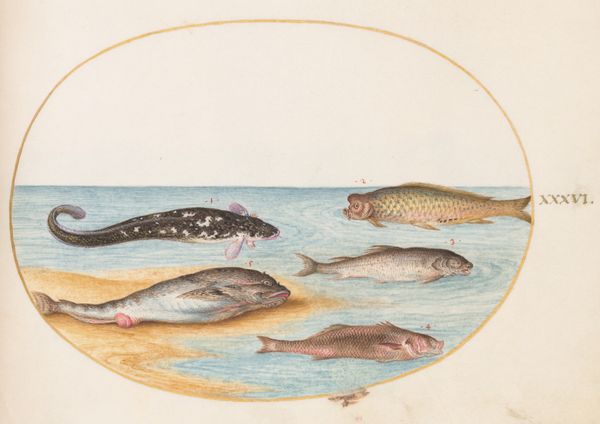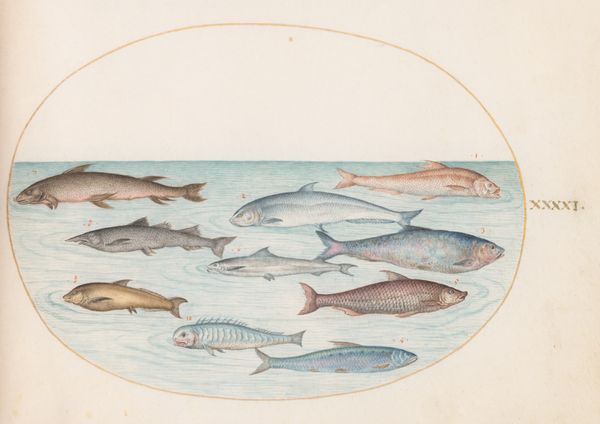
drawing, coloured-pencil, watercolor
#
drawing
#
coloured-pencil
#
water colours
#
11_renaissance
#
watercolor
#
coloured pencil
#
watercolor
Dimensions: page size (approximate): 14.3 x 18.4 cm (5 5/8 x 7 1/4 in.)
Copyright: National Gallery of Art: CC0 1.0
Curator: Welcome. Here we have Plate 23: Bream(?) and Other Fish, a work rendered in watercolor and colored pencil by Joris Hoefnagel, dating to around 1575-1580, part of his extensive natural history illustrations. Editor: It's remarkably vibrant. The arrangement within that circular frame almost gives it a sense of floating or being suspended. And such meticulous rendering, you can almost feel the scales. Curator: Hoefnagel was part of a larger humanist movement that observed nature with fresh eyes, his work fits neatly into a period when increased exploration lead to wider European engagement with the natural world. How do the materials contribute to this observation? Editor: The transparent layering of the watercolor, paired with the precision of the colored pencil allows for both accurate detail, note the delineation of species variance, but also the suggestion of luminosity; it's almost ethereal in the way it captures light on the scales. Curator: These weren't made in a vacuum, of course. Wealthy patrons were clamoring for such images, wanting to expand their knowledge and to display power, so it makes me wonder, how much scientific accuracy and cultural status did it embody in this specific context? Editor: Interesting. Looking at this, you are completely correct. But the emphasis on the intrinsic qualities elevate the specimens to something beyond mere documents; the artist brings scientific rendering to new artistic heights. The formal decision of the ovoid evokes symbolic references to creation or even the philosopher's egg, if you will. Curator: Do you find that tension lends another dimension to it, knowing that it was intended for elite consumption, which at the time further solidified power structures, but which is rendered in delicate materials? Editor: Undoubtedly. It highlights the complex interaction of art, nature, and class during the Renaissance, the visual delight should not obfuscate social implications that the piece evokes through form and composition, no? Curator: Well, by examining Hoefnagel's method alongside the economic backdrop, one may view "Bream(?)" not as just a collection of swimming creatures, but as the display of access and power within a specific period. Editor: It's always thrilling when close looking yields wider questions, don't you think?
Comments
No comments
Be the first to comment and join the conversation on the ultimate creative platform.
